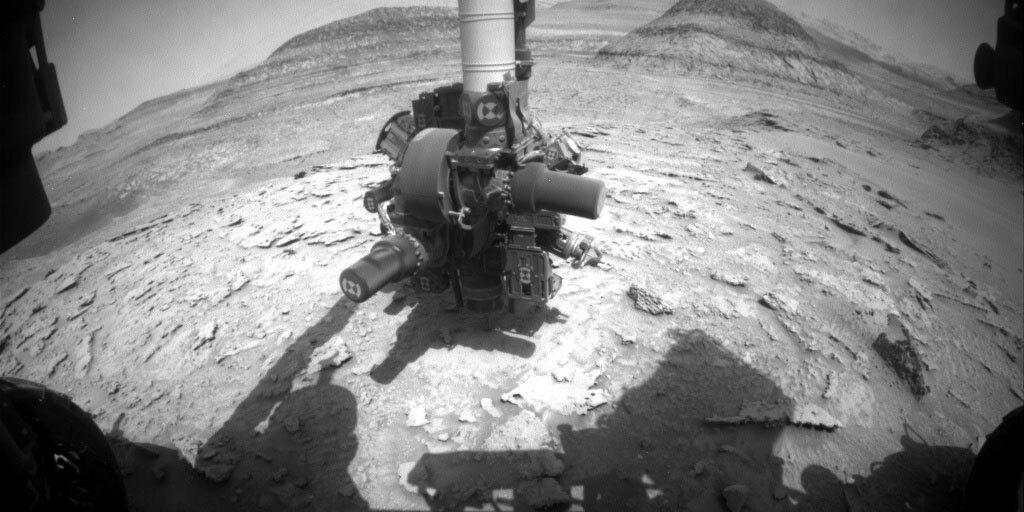3 min read

On Wednesday, we uplinked a drill plan, to drill the target “Amapari” in the Marker Band. Coming into planning this morning, we learned that the drill was only able to penetrate 7 mm into the hard rock here, and this was not deep enough for the drill to collect sample that could be analyzed by CheMin and SAM. Fortunately, the RPs examined the workspace this morning and found a second similar area, and we are going to try again.
Each drill campaign follows a very strict set of guidelines – each target needs to be carefully triaged to determine chemistry and physical properties of the rock itself. So, even though we are still on the same block, just over 10 cms away from the original target, we have to reset and do the full triage again.
Accordingly, we will brush the new target “Amapari2” and then subject it to a thorough investigation of the geochemistry using APXS and ChemCam. Mastcam will image the multispectral signature of the brushed target and MAHLI will take a full suite of images looking at the morphology, particularly following the “preload” test, where the RPs put pressure on the target to get an idea of how it will react during the drilling process. This data will be downlinked to Earth over the weekend, giving us time to process it and see if this is a worthy drill target.
In addition to characterizing our potential drill target, Mastcam and ChemCam will investigate beyond the immediate workspace while we are parked here. ChemCam will use LIBS to analyse a float rock (“Pauxiana”) which appears to have come from the Marker Band and a patch of more resistant appearing material (“Macuxi”) just above the float rock. Mastcam will take a series of mosaics, expanding our current coverage of this area and a large mosaic of the side of the butte “Bela Vista” to document the stratigraphy on its east side.
ENV will continue their ongoing mission to document changes in environmental conditions in Gale crater. Mastcam will take solar tau measurements on each sol of the plan to measure the dust in the atmosphere sol 3677 and a sky survey. Navcam will take a “suprahorizon” movie and a pair of “zenith” movies, which are used to examine martian clouds, their properties and abundances. The zenith movie looks directly upwards to look at clouds and their direction, whilst the suprahorizon movie is targeted in a more horizontal direction, aimed at the crater rim. A third type of Navcam movie (“dust devil” movie) will be aimed lower than the suprahorizon movie, to search for dust devils across the crater floor or the slopes of Mt. Sharp – these can tell us about surface heating conditions, convection and winds near the surface. Finally, there were also standard RAD, REMS and DAN activities.
Written by Catherine O'Connell-Cooper, Planetary Geologist at University of New Brunswick







